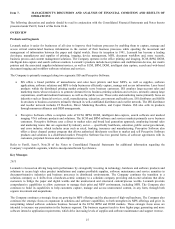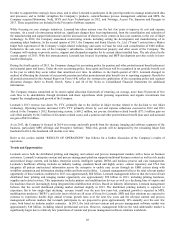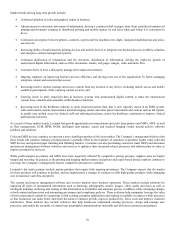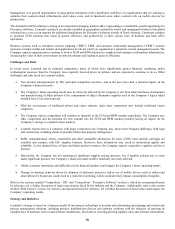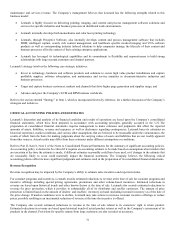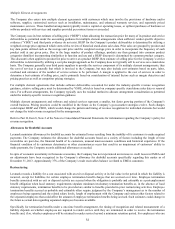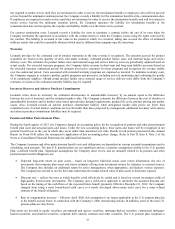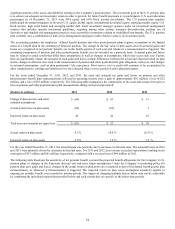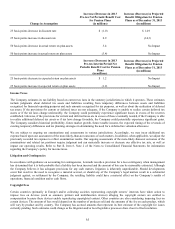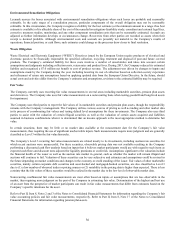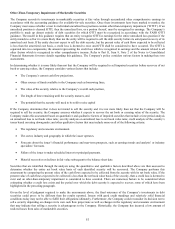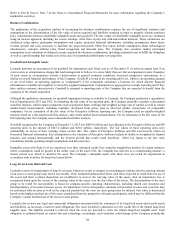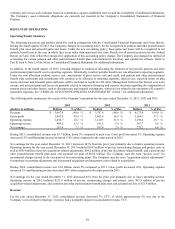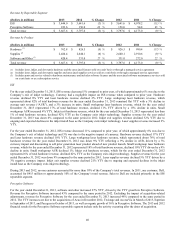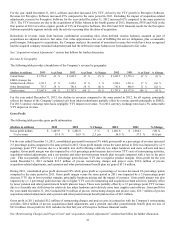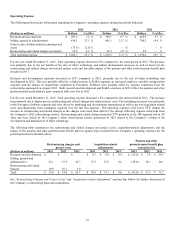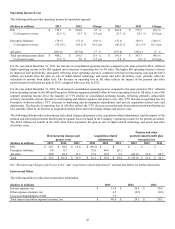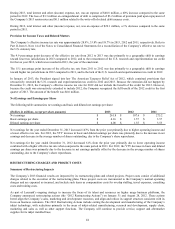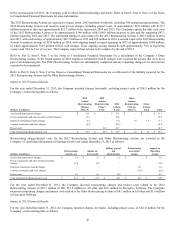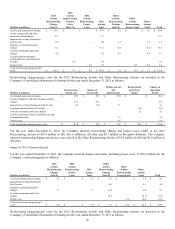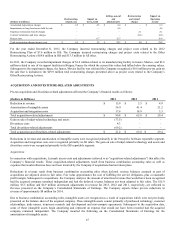Lexmark 2013 Annual Report Download - page 41
Download and view the complete annual report
Please find page 41 of the 2013 Lexmark annual report below. You can navigate through the pages in the report by either clicking on the pages listed below, or by using the keyword search tool below to find specific information within the annual report.
37
Other-Than-Temporary Impairment of Marketable Securities
The Company records its investments in marketable securities at fair value through accumulated other comprehensive earnings in
accordance with the accounting guidance for available-for-sale securities. Once these investments have been marked to market, the
Company must assess whether or not its individual unrealized loss positions contain other-than-temporary impairment (“OTTI”). If an
unrealized position is deemed OTTI, then the unrealized loss, or a portion thereof, must be recognized in earnings. The Company’s
portfolio is made up almost entirely of debt securities for which OTTI must be recognized in accordance with the FASB OTTI
guidance. The model in this guidance requires that an entity recognize OTTI in earnings for the entire unrealized loss position if the
entity intends to sell or it is more likely than not the entity will be required to sell the debt security before its anticipated recovery of its
amortized cost basis. If the entity does not expect to sell the debt security, but the present value of cash flows expected to be collected
is less than the amortized cost basis, a credit loss is deemed to exist and OTTI shall be considered to have occurred. The OTTI is
separated into two components, the amount representing the credit loss which is recognized in earnings and the amount related to all
other factors which is recognized in other comprehensive income. Refer to Part II, Item 8, Note 2 of the Notes to Consolidated
Financial Statements for more details regarding this guidance. The Company’s policy considers various factors in making these two
assessments.
In determining whether it is more likely than not that the Company will be required to sell impaired securities before recovery of net
book or carrying values, the Company considers various factors that include:
The Company’s current cash flow projections,
Other sources of funds available to the Company such as borrowing lines,
The value of the security relative to the Company’s overall cash position,
The length of time remaining until the security matures, and
The potential that the security will need to be sold to raise capital
If the Company determines that it does not intend to sell the security and it is not more likely than not that the Company will be
required to sell the security, the Company assesses whether it expects to recover the net book or carrying value of the security. The
Company makes this assessment based on quantitative and qualitative factors of impaired securities that include a time period analysis
on unrealized loss to net book value ratio; severity analysis on unrealized loss to net book value ratio; credit analysis of the security’s
issuer based on rating downgrades; and other qualitative factors that may include some or all of the following criteria:
The regulatory and economic environment.
The sector, industry and geography in which the issuer operates.
Forecasts about the issuer’s financial performance and near-term prospects, such as earnings trends and analysts’ or industry
specialists’ forecasts.
Failure of the issuer to make scheduled interest or principal payments.
Material recoveries or declines in fair value subsequent to the balance sheet date.
Securities that are identified through the analysis using the quantitative and qualitative factors described above are then assessed to
determine whether the entire net book value basis of each identified security will be recovered. The Company performs this
assessment by comparing the present value of the cash flows expected to be collected from the security with its net book value. If the
present value of cash flows expected to be collected is less than the net book value basis of the security, then a credit loss is deemed to
exist and an other-than-temporary impairment is considered to have occurred. There are numerous factors to be considered when
estimating whether a credit loss exists and the period over which the debt security is expected to recover, some of which have been
highlighted in the preceding paragraph.
Given the level of judgment required to make the assessments above, the final outcomes of the Company’s investments in debt
securities could prove to be different than the results reported. Issuers with good credit standings and relatively solid financial
conditions today may not be able to fulfill their obligations ultimately. Furthermore, the Company could reconsider its decision not to
sell a security depending on changes in its own cash flow projections as well as changes in the regulatory and economic environment
that may indicate that selling a security is advantageous to the Company. Historically, the Company has incurred a low amount of
realized losses from sales of marketable securities.
37


